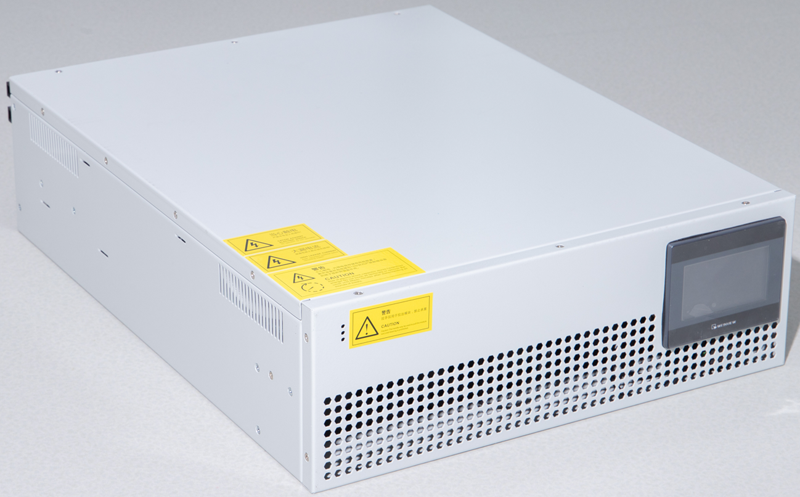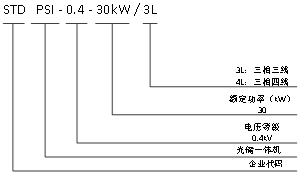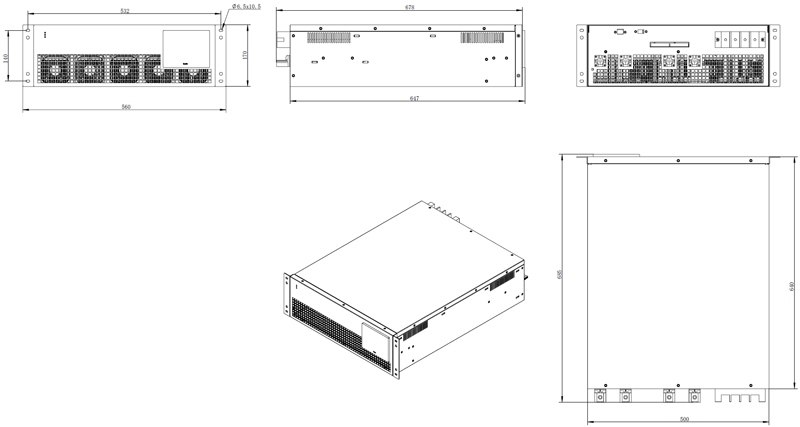1、Overview
The STD PSI series optical storage integrated machine adopts a two-stage topology structure, with a power of 30kW on both the AC and DC sides. The DC side is connected to photovoltaic cells and energy storage cells respectively, and advanced digital control technology is used to optimize control performance, suitable for different battery charging and discharging needs. The product adopts a rack design, with small size, light weight, wide DC voltage range, and strong adaptability to the power grid.

2、Application Scenario
1)The energy of photovoltaics is preferentially stored in the battery, while the remaining electricity supplies power to the load. When the photovoltaic energy is insufficient, the energy storage battery supplies power to the load.
2)The photovoltaic energy shall be stored in the battery first, and the residual electricity shall supply power to the load. When the photovoltaic energy is insufficient, the load shall be supplied by the energy storage battery first, and then by the diesel generator when the energy is insufficient.
3) Emergency power supply and backup power, when the mains power is cut off, automatically switches to off grid load mode to ensure that the load does not lose power. Simultaneously supporting off grid black start to ensure emergency load power supply.
3、Performance characteristics
1) can adapt to various batteries and achieve different charging and discharging strategies for different batteries.
2) Communication methods include RS485, CAN, Ethernet, etc.
3)Multiple working modes such as grid connected mode and off grid mode.
4)The off grid independent inverter function is established by the optical storage integrated machine to establish a microgrid system, ensuring the power supply of important loads.
5) Equipped with variable frequency soft start motor function for off grid applications.
6)Independent air duct design, excellent heat dissipation design.
4、Model description and appearance dimensions


5、Technical parameters
|
Model |
STD PSI-0.4-30kW/3L |
|
|
Photovoltaic interface parameters |
Photovoltaic voltage range |
DC300V~800V |
|
Rated input power |
30kW |
|
|
Maximum input current |
60A |
|
|
Opening voltage |
DC300V |
|
|
PV optimal input |
DC650V~750V |
|
|
Rated input voltage |
DC750V |
|
|
Maximum DC input voltage |
DC800V |
|
|
Battery interface parameters |
DC voltage range |
DC200V~700V |
|
Optimal DC range |
DC540V~600V |
|
|
Maximum current |
75A |
|
|
Rated power |
30kW |
|
|
Charging method |
Constant voltage, constant division, constant power, three-stage charging |
|
|
AC grid connection parameters |
Grid voltage |
400V±15% |
|
Grid frequency |
50Hz/60Hz±2.5Hz |
|
|
Rated power |
30kW |
|
|
Rated current |
45A |
|
|
Grid structure |
Three phase three wire/three phase four wire |
|
|
Total current harmonic distortion rate |
≤3% |
|
|
power factor |
≥0.99(-1~1) |
|
|
AC off grid parameters |
Wiring method |
Three phase three wire/three phase four wire |
|
Rated power |
30kW |
|
|
Rated output voltage for off grid operation |
400Vac±10%(adjustable) |
|
|
Off grid operation output voltage harmonic distortion rate THDvTHDv |
<3%(Linear Load) |
|
|
Off grid operation output frequency |
50Hz/60Hz±0.2% |
|
|
Maximum current |
45A |
|
|
Dynamic response speed |
≤100ms |
|
|
Unbalanced load capacity |
100% |
|
|
Overload capacity |
110% load: running time≥10min, 120% load: running time≥1min |
|
|
system parameter |
Maximum unidirectional efficiency of the module |
≥97% |
|
System power supply |
DC24V |
|
|
Anti impact current capability |
≤150% |
|
|
Anti reflux function |
reverse current protection |
|
|
Size (W * D * H)) |
≤560*685*170mm |
|
|
Weight |
40kg |
|
|
work environment |
Protection level |
IP20(Important component gluing) |
|
Working temperature |
-20℃~50℃ |
|
|
Relative humidity |
0~95% |
|
|
Working altitude |
2000m (no derating required), 2000m~4000 derated for use (1% derating per 100 meters) |
|
|
Noise |
<65dB |
|
|
Communication and protection |
Communication interface |
CAN, RS485 (supports GPRS/WIFI wireless communication) |
|
Communication protocol |
CAN、ModBus |
|
|
Receive instructions |
Demand voltage/demand current, switch on/off |
|
|
Upload data |
PV input voltage, PV input current, PV real-time power, output voltage, output current, output power, fault information, system operating temperature, PV daily/historical power generation, etc |
|
|
Protect |
Over temperature, input/output overvoltage/undervoltage, anti reverse connection, output overcurrent, etc |
|
|
Cooling method |
Forced air cooling |
|
|
Isolation method |
Electrical non isolation, communication isolation |
|
|
Installation and fixation method |
Rack |
|